Product Introduction
Types of Sheet Laser Cutting Machines
-
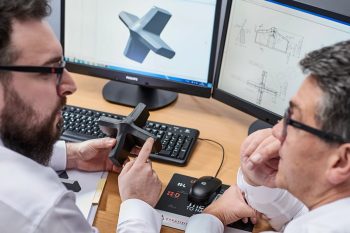
FL-C Laser Cutting Machine
Rated 4.88 out of 5$22,360.00 – $94,900.00Price range: $22,360.00 through $94,900.00 Select options This product has multiple variants. The options may be chosen on the product page -
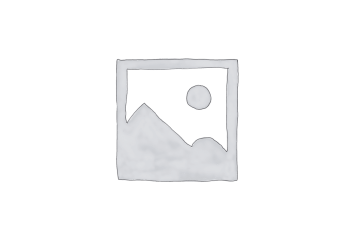
FL Laser Cutting Machine
Rated 4.88 out of 5$24,050.00 – $215,150.00Price range: $24,050.00 through $215,150.00 Select options This product has multiple variants. The options may be chosen on the product page -

FE Laser Cutting Machine
Rated 4.75 out of 5$29,900.00 – $228,150.00Price range: $29,900.00 through $228,150.00 Select options This product has multiple variants. The options may be chosen on the product page -

FB Laser Cutting Machine
Rated 4.75 out of 5$29,250.00 – $226,850.00Price range: $29,250.00 through $226,850.00 Select options This product has multiple variants. The options may be chosen on the product page -

FP Laser Cutting Machine
Rated 4.50 out of 5$35,750.00 – $240,500.00Price range: $35,750.00 through $240,500.00 Select options This product has multiple variants. The options may be chosen on the product page -

FH Laser Cutting Machine
Rated 4.75 out of 5$41,600.00 – $254,800.00Price range: $41,600.00 through $254,800.00 Select options This product has multiple variants. The options may be chosen on the product page
Application of Sheet Laser Cutting Machines
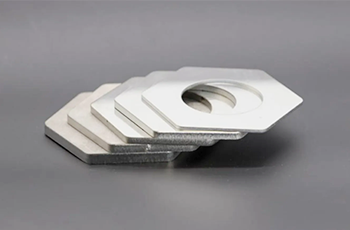
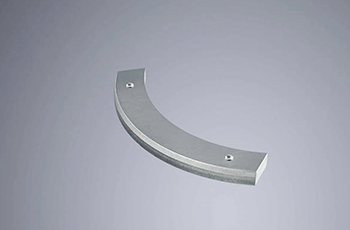
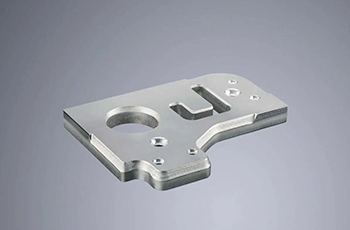


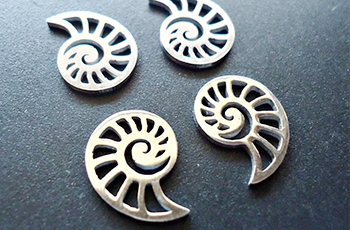


Why Choose Us
Cutting-Edge Technology
Every Faster Laser machine is built with the latest advancements, ensuring precise cuts, faster operation speeds, and the ability to handle complex designs effortlessly.
Superior Build Quality
We use only premium-grade materials and components, ensuring that every machine delivers consistent performance and maintains durability under heavy use.
Customized Solutions
Our team works closely with each customer to develop tailored laser cutting solutions that meet specific production needs and business objectives.
Comprehensive Support
Faster Laser provides thorough training, responsive technical support, and ongoing maintenance services to keep your machines running at peak efficiency.
Cost-Effective Investment
We offer high-quality laser cutting machines at competitive prices, ensuring you get maximum performance and long-term value from your investment.
Proven Industry Experience
With years of expertise and a strong global client base, Faster Laser has built a reputation for reliability, innovation, and customer satisfaction.
Sheet Laser Cutting Machines VS Other Cutting Machines
| Comparison Item | Sheet Laser Cutting Machine | Plasma Cutting Machine | Waterjet Cutting Machine | Flame Cutting Machine |
|---|---|---|---|---|
| Cutting Method | Fiber laser beam | Ionized gas arc | High-pressure water with abrasive | Oxy-fuel combustion |
| Suitable Materials | Stainless steel, carbon steel, aluminum, brass | Conductive metals | Almost all materials | Thick carbon steel |
| Cutting Precision | Very high | Moderate | High | Low |
| Edge Quality | Clean, burr-free | Rough, needs finishing | Smooth and clean | Rough and oxidized |
| Cutting Speed | Fast | Fast | Slow to moderate | Slow |
| Heat Affected Zone (HAZ) | Minimal | Medium | None | Large |
| Material Thickness Range | Thin to medium | Medium to thick | Wide (including very thick) | Thick only |
| Ability to Cut Intricate Designs | Excellent | Limited by torch size | Excellent | Poor |
| Operating Cost | Low | Moderate | High (abrasives, water) | Low |
| Maintenance Requirements | Low | Moderate | High | Low |
| Environmental Impact | Low | Fumes and noise | Water and abrasive waste | High emissions |
| Tool Wear | Minimal (non-contact cutting) | Moderate (consumables) | High (nozzles, garnet) | Low |
| Automation Capability | Excellent (CNC, nesting) | Good | Limited | Poor |
| Initial Equipment Cost | Moderate to high | Low to moderate | Very high | Low |
| Common Industry Use | Precision metal fabrication | General metal cutting | Aerospace, stone, custom jobs | Heavy steel structure, shipbuilding |
Customer Testimonials
Related Resources
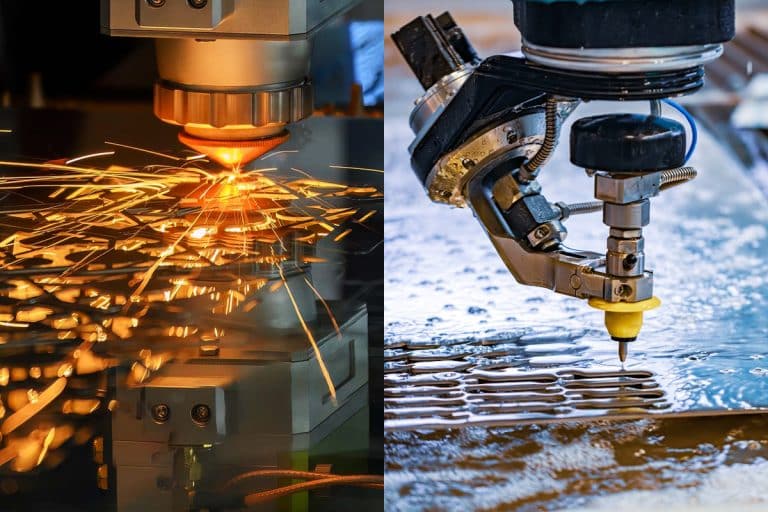
Laser Cutting VS Waterjet Cutting
This article compares laser cutting and waterjet cutting, covering processes, materials, costs, precision, and applications to help manufacturers select the best method.
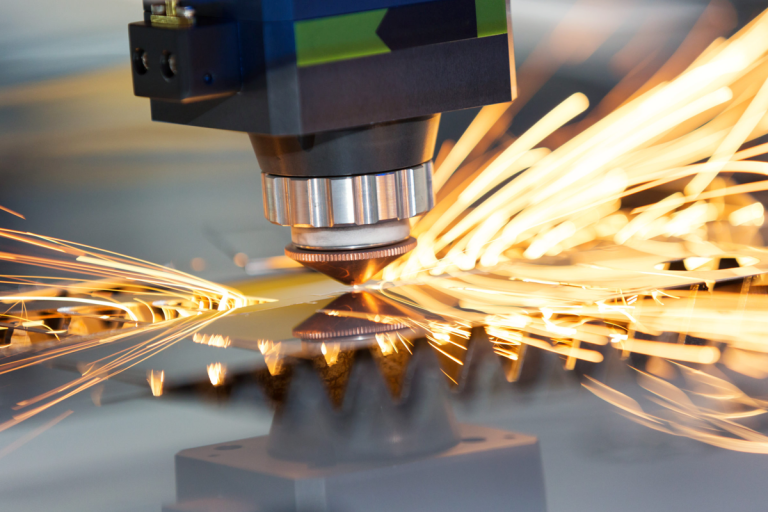
Laser Cutting VS Plasma Cutting
This article explores a detailed comparison of laser cutting and plasma cutting, including how each process works, material ranges, cut quality, speed, costs, safety, and key selection factors.
Frequently Asked Questions
What Is Sheet Laser Cutting?
- Carbon Steel Sheets: Sheet laser cutting is highly efficient for carbon steel, offering fast, clean cuts with oxygen as the assist gas. Depending on the machine’s power (1kW to 30kW or more), it can cut carbon steel sheets up to 5–60mm thick. This makes it a staple in automotive frames, structural parts, and heavy equipment.
- Stainless Steel Sheets: Using nitrogen as an assist gas, laser cutting produces bright, oxide-free edges on stainless steel sheets. Fiber lasers can process stainless steel up to 50mm thick, which is ideal for food-grade equipment, kitchen appliances, medical devices, and architectural panels.
- Aluminum and Alloys: Reflective and lightweight, aluminum is precisely cut by fiber lasers without deformation or discoloration. These machines can cut aluminum sheets up to 30mm and are used in aerospace, electronics, and signage industries.
- Brass and Copper Sheets: Despite their reflective nature, fiber lasers effectively cut brass and copper sheets with the help of nitrogen or air assist. These materials are common in decorative elements, electrical parts, and plumbing components.
- Galvanized Sheets: Laser cutting machines cleanly process galvanized steel for HVAC ducts, enclosures, and industrial cabinets. Proper fume extraction is essential to safely handle the zinc coating during cutting.
What Is The Disadvantage of Sheet Laser Cutting Machines?
- High Initial Investment: Fiber laser cutting machines, especially those with large bed sizes or high laser power (e.g., 6kW–15kW), are expensive. Entry-level machines can cost around $30,000–$80,000, while industrial models range from $100,000 to $300,000 or more. This cost includes the machine, laser generator, chiller, fume extractor, and installation.
- Limited to Flat Materials: Sheet laser cutting machines are designed to process flat sheets only. They cannot cut tubes, pipes, or 3D profiles unless equipped with an additional rotary axis or integrated with a tube-cutting module. This makes them less versatile than sheet and tube combo machines.
- Not Suitable for Non-Metallic Materials: Fiber lasers are highly effective for cutting metals, but they are not suitable for cutting organic or non-metallic materials like Wood, Acrylic, PVC, or Foam. Attempting to cut these materials can result in poor quality, fire hazards, or toxic gas release. For non-metals, CO2 lasers are more appropriate.
- Edge Oxidation on Certain Metals: When using oxygen assist gas, materials like carbon steel may develop oxidized (blackened) edges, which could require secondary cleaning or surface treatment, especially in applications demanding cosmetic finishes or weld-prepared edges.
- High Energy and Gas Consumption: Although fiber lasers are more energy efficient than CO2 lasers, operating costs still include high power consumption and the continuous use of assist gases such as nitrogen or oxygen, which can increase production costs.
- Maintenance Requirements: Sheet laser cutting machines require regular maintenance, including: cleaning or replacing protective lenses and nozzles; lubricating motion systems; and managing chiller water quality. Neglecting maintenance can quickly lead to reduced performance or costly downtime.
- Safety and Fume Concerns: Laser cutting generates intense heat and produces metal fumes, particulates, and potentially hazardous gases, especially when cutting galvanized or coated metals. A proper fume extraction system and operator safety protocols are essential.
What Is The Cost of Sheet Laser Cutting Machines?
- Entry-Level Machines ($25,000 – $60,000): These are compact, lower-power models usually equipped with 1000W to 2000W fiber lasers and working areas like 1300×2500mm. They are suitable for cutting thin carbon steel (up to ~8mm) and stainless steel (up to ~4mm), making them ideal for startups, small workshops, and sign makers. However, they typically come with fewer automated features and lower processing speed.
- Mid-Range Machines ($60,000 – $150,000): This category includes machines with 2000W to 6000W laser power and standard table sizes of 1500×3000mm or 2000×4000mm. These systems offer better cutting performance on thicker sheets and include features like automatic focus heads, higher-speed servo motors, and basic nesting software. They are well-suited for general metal fabrication, HVAC, kitchenware, and medium-volume production.
- High-End Industrial Machines ($150,000 – $300,000+): Equipped with 20kW to 40kW+ laser sources, large-format cutting beds (up to 2000×6000mm), and advanced automation features like dual exchange tables, intelligent control systems, and full enclosures, these machines are built for 24/7 industrial production. They can cut carbon steel up to 40mm and stainless steel up to 30mm or more. Commonly used in heavy machinery, aerospace, shipbuilding, and steel service centers.
What Thickness Ranges Can Sheet Laser Cutting Machines Effectively Handle?
- Carbon Steel: Sheet laser cutting machines process carbon steel exceptionally well using oxygen as an assist gas. Lower-power machines (1kW–2kW) can cut sheets up to 10mm, while higher-power models (6kW–12kW or more) can handle thicknesses of up to 20–50mm. These machines are widely used in structural steel, construction components, and machinery parts.
- Stainless Steel: For stainless steel, nitrogen is typically used as an assist gas to ensure oxide-free, clean edges. A 1kW laser can cut up to 4mm, and machines above 6kW can cut up to 20–40mm. This makes sheet laser cutting ideal for food-grade equipment, medical tools, and decorative metal panels.
- Aluminum and Alloys: Aluminum is reflective and thermally conductive, but fiber lasers handle it well. Thickness capability ranges from 3mm for low-power machines to 30mm or more for high-power (20kW+) systems. It’s commonly used in aerospace, transportation, and electronics applications.
- Brass: With nitrogen assist gas to prevent oxidation, sheet laser cutting machines can cut brass sheets up to 18mm thick when using higher power levels. It’s popular in the architectural, plumbing, and electrical industries.
- Copper: Copper requires careful handling due to its high reflectivity, but fiber lasers with sufficient wattage can cut up to 12mm. Nitrogen or compressed air is used to maintain clean edges, especially in electronics and busbar production.
How To Choose The Correct Sheet Laser Cutting Machine Bed Size?
- 3015 (3000 × 1500 mm): This is the most common industrial bed size, ideal for cutting standard 5′ × 10′ metal sheets. It offers a balance between efficiency, footprint, and versatility. Suitable for general sheet metal fabrication, signage, machine parts, and light industrial production.
- 4015 (4000 × 1500 mm): This size offers additional length over the 3015 format, allowing more parts per sheet and better nesting. It’s ideal for applications involving longer parts such as electrical cabinets, frames, or elevator panels, without expanding the machine width.
- 4020 (4000 × 2000 mm): With a wider and longer platform, this bed accommodates larger-format sheets, offering high nesting efficiency and the ability to cut wide or multiple small parts simultaneously. Used in architectural panels, large enclosures, and machine bases.
- 6015 (6000 × 1500 mm): Designed for cutting 6-meter-long metal sheets, this bed is perfect for producing long structural components or batch processing in mass production. Commonly used in construction, trailer manufacturing, and large-scale fabrication lines.
- 6025 (6000 × 2500 mm): The largest in this list, this bed size supports extra-wide and long sheets, maximizing productivity and minimizing material waste for ultra-large parts or high-yield nested jobs. Suitable for shipbuilding, industrial equipment, and heavy-duty manufacturing.
What Is The Service Life of Sheet Laser Cutting Machines?
- Overall Machine Lifespan: A high-quality sheet laser cutting machine typically has a service life of 8 to 12 years. With routine maintenance and stable operating conditions, some machines can last even longer. Key factors that extend service life include using the machine within its rated capacity, keeping the environment clean and dry, and following scheduled maintenance.
- Fiber Laser Source: The laser generator—the heart of the machine—generally has a rated lifespan of up to 100,000 hours. Brands like IPG, Raycus, or MAX offer long-lasting performance with minimal maintenance. Ensuring a stable power supply and proper cooling is essential to maximize this lifespan.
- Cutting Head and Optics: The cutting head assembly, including the collimating and focusing lenses, typically lasts 2 to 5 years, depending on the cutting conditions and material types. Protective lenses and nozzles, which are consumables, require replacement more frequently—anywhere from weekly to monthly.
- Motion System (Rails, Guides, Motors): Precision components like linear guides, rack and pinions, and servo motors can last 6 to 10 years with regular lubrication, cleaning, and proper alignment. Worn motion systems may lead to accuracy loss if not maintained.
- Chiller and Auxiliary Equipment: Industrial water chillers, air compressors, and fume extractors typically have a lifespan of 5 to 7 years. These systems must be kept clean, with filters and water changed regularly to avoid performance issues.
What Are The Dangers of Sheet Laser Cutting Machines?
- Laser Radiation Exposure: The high-powered laser beam used to cut metal can cause severe burns or permanent eye damage, even from indirect reflections. Most sheet laser cutting machines use Class 4 fiber lasers, which require full enclosure or protective shielding. Operators must never bypass safety interlocks or view the laser beam without certified protection.
- Fire Risk: Laser cutting generates extreme heat, and if flammable materials (oil, paper, dust, or packaging) are left near the cutting area, it can trigger a fire. Improper handling of cutting scrap, slag buildup, or insufficient ventilation can increase this risk, especially during unattended operation.
- Harmful Fumes and Particulates: Cutting metal sheets—especially galvanized steel, aluminum, or coated metals—produces toxic gases and fine particulate matter, including zinc oxide and metal dust. Without proper fume extraction systems, these emissions can harm respiratory health and contaminate the workspace.
- Electrical Hazards: Laser cutting machines operate with high-voltage power supplies. Faulty grounding, exposed wires, or improper maintenance can lead to electric shock, equipment failure, or even fire. Routine inspection of electrical systems is essential.
- Gas Leaks or Explosions: Oxygen and nitrogen are commonly used as assist gases during cutting. Poorly sealed lines or regulators can cause leaks, which pose explosion or asphyxiation risks in enclosed environments. Gas systems must be regularly inspected for pressure integrity.
- Mechanical Injuries: Sheet laser cutting machines include automated gantries, fast-moving axes, and rotary worktables. Operators risk pinching, crushing, or cutting injuries if safety protocols are ignored or sensors are disabled. Loose clothing or untrained handling increases the risk of accidents.
- Noise and Heat: While quieter than traditional machinery, high-speed cutting can still produce significant noise and localized heat, especially in high-power machines. Prolonged exposure without protection can cause fatigue or hearing damage.
How To Maintain Sheet Laser Cutting Machines?
- Daily Maintenance
- Clean the Cutting Table: Remove leftover slag, metal dust, and small parts from the cutting bed. Accumulated debris can interfere with sheet alignment and airflow, affecting cut quality and safety.
- Inspect and Clean the Protective Lens and Nozzle: Use lens paper and alcohol to clean the protective lens daily and check for scratches or burns. Inspect the nozzle for blockages or wear, which can affect gas flow and cut consistency.
- Check Assist Gas Supply: Verify that oxygen, nitrogen, or compressed air lines are connected securely, gas pressure is stable, and filters are free from oil or moisture.
- Monitor the Water Chiller: Ensure the industrial water chiller is functioning correctly, with the water level and temperature (ideally 22℃–26℃) within the recommended range. Use only distilled or deionized water.
- Weekly Maintenance
- Lubricate Motion Components: Apply lubricant to linear rails, guideways, and rack gears. This reduces friction, prevents wear, and ensures smooth, precise movement of the gantry and cutting head.
- Check the Air Compressor and Filters: Drain water from the air tank and inspect the oil separator and filters. Moisture or oil in compressed air can contaminate optics and damage pneumatic components.
- Inspect Fan and Dust Removal System: Clean the fume extractor or dust collector to ensure efficient smoke and particulate removal. Replace filters as needed to maintain airflow and prevent fire hazards.
- Monthly Maintenance
- Inspect the Focus and Collimating Lenses: Disassemble and inspect the internal lenses for dust, pitting, or discoloration. Clean gently or replace if performance is compromised.
- Check Belt Tension and Fasteners: Inspect all mechanical belts for signs of cracking, slack, or misalignment. Tighten any loose bolts or screws on the machine frame and gantry.
- Calibrate the Z-Axis and Autofocus System: Ensure the automatic height controller is functioning properly and maintaining the correct focus distance during cuts.
- Quarterly Maintenance
- Flush and Replace Chiller Water: Prevent algae and mineral buildup by draining and refilling the water chiller with fresh distilled water.
- Check Electrical Components and Cables: Inspect wiring for signs of wear, corrosion, or poor connections. Ensure grounding is intact and there are no exposed wires.
- Clean Control Cabinet and Fans: Dust accumulation in the control box can cause overheating. Use compressed air to clean internal fans, filters, and circuit boards.
- Software and System Checks
- Back up control parameters and cutting files regularly.
- Update firmware or control software if updates are provided by the manufacturer.
- Review system logs and alarms to detect recurring issues early.
